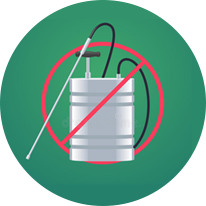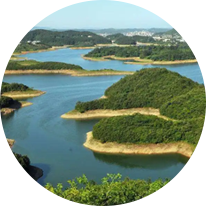Why Bamboo can be our preferred
By now,nearly everyone realize that the environment of the planet we live become worse and worse.
To reduce the use of plastic and other pollution material ,bamboo has been used for everything from food to bridge building , but consumers and manufacturers are taking a fresh look at all that this amazing plant has to offer. Here are the top ten reasons that bamboo will be our preferred.
-

Renewable Resource
Bamboo can be harvested in one to five years. Almost 1 million acres of forests are lost each week worldwide to deforestation. Bamboo's versatility as a substitute for hardwoods offers a chance to drastically reduce that figure and protect the forests that we have left.
-

Absorbs Greenhouse Gases
Bamboo absorbs carbon dioxide and releases 35% more oxygen into the atmosphere than an equivalent stand of hardwood trees.Support the global "plastic reduction and replacement" cause, and provide "bamboo scheme" for environmental protection and sustainability.
-

Amazing Growth Rate
Some species of bamboo grow more than three feet each day! No plant on the planet features a faster growth rate. When it is harvested, it will grow a new shoot from its extensive root system with no need for additional planting or cultivation.
-

Very Little Waste
After harvesting, virtually every part of the plant is used to make a wide variety of products. From soil-enriching mulch to beautiful furniture to chopsticks, every part of the plant can be utilized.The waste is processed into fuel products. Bamboo shoots have also become a delicacy.
-

Versatility
Bamboo can replace the use of wood for nearly every application. Paper, flooring, furniture, charcoal, building materials, and much more can be made from bamboo. What's more, bamboo fibers are far stronger than wood fibers .
-

No fertilizer, pesticides or herbicides needed
Unlike most cash crops, bamboo requires no agricultural chemicals to thrive. Unlike cotton, which is one of the intensely sprayed crops in the world and rapidly depletes the nutrients in the soil, bamboo sequesters nitrogen and cultivation does not add chemicals to the environment.
-

Soil Protection
Once hardwood forests are clear-cut and the stumps are burned to provide fertilizer and space for growing crops, erosion inevitably occurs as the topsoil and nutrients are washed away by rainfall. Bamboo roots remain in place after harvesting where they prevent erosion and help retain nutrients for the next crop.
-

Strong Adaptability
Bamboo can grow in arid regions where droughts cause other crops to fail since the roots are left in place after harvesting. From low wetlands to higher elevations in the mountains, bamboo thrives in a wide range of climates.








 English
English Français
Français Deutsch
Deutsch Español
Español 中文简体
中文简体












